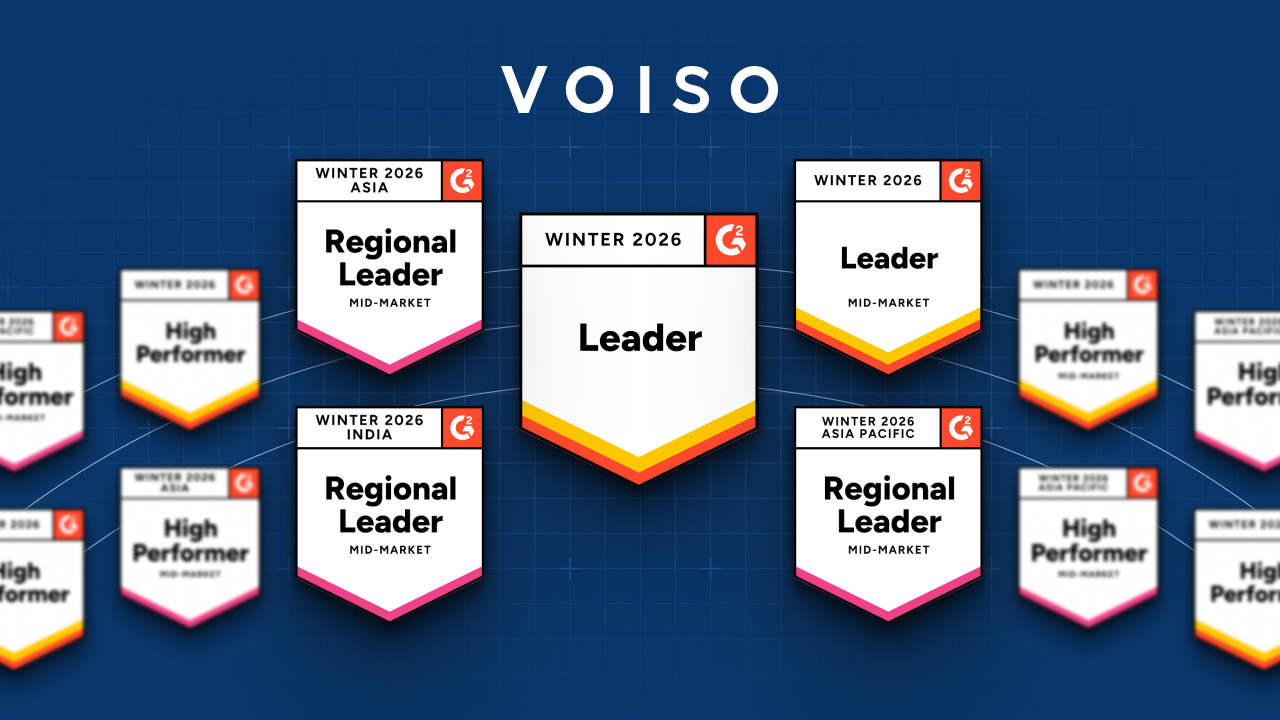In the early days of outbound calling, the promise of predictive dialing transformed how businesses reached customers. Yet, this innovation introduced a problem that continues to haunt the industry: nuisance calls, when a customer answers, but no agent is available to speak with them. The result? Frustration, wasted time, and eroded trust.
Nuisance calls don’t just irritate customers – they damage businesses. Research from Ofcom reveals that 73% of customers have a negative perception of brands associated with nuisance calls. For call centers, these dropped connections lead to inefficiency, regulatory scrutiny, and financial losses. In fact, industries heavily reliant on outbound dialing, such as financial services and collections, report significant financial losses and declining customer retention due to nuisance calls.
Addressing nuisance calls is critical to staying competitive in a market increasingly defined by customer-centric practices.
Key Takeaways
- Nuisance Calls Overview: Result from predictive dialers overestimating agent availability, causing dropped or silent calls, which frustrates customers and damages brand trust.
- Early Predictive Dialer Limitations: Focused on call volume over quality, leading to over-dialing, inefficiencies, compliance penalties, and negative customer perceptions.
- Modern Solutions: AI-powered dynamic pacing, Answering Machine Detection (AMD), and real-time analytics reduce dropped calls, improve agent productivity, and enhance customer experiences.
- Regulatory Compliance: Adherence to TCPA (U.S.) and Ofcom (UK) standards is essential to avoid fines, legal issues, and brand damage.
- Best Practices: Proactive campaign management, blended agent strategies, realistic solutions, effective training, and ongoing monitoring reduce nuisance calls and boost engagement.
- AI-Driven Enhancements: Predictive dialing, speech analytics, sentiment monitoring, and dynamic caller ID optimize connection rates, personalize interactions, and minimize idle time.
- Manager Recommendations: Use all-in-one contact center platforms, track key metrics (abandoned calls, idle time, connection rates), maintain compliance culture, leverage advanced analytics, and align technology with long-term business goals.
The Origins of Nuisance Calls in Predictive Dialing
What Are Nuisance Calls?
Nuisance calls arise from a simple miscalculation: predictive dialers initiate calls based on projected agent availability. If the algorithm overestimates how quickly agents will be free, the dialer connects customers to silence – or worse, disconnects entirely.
These missteps aren’t rare. Reports from regulators like Ofcom and the FCC highlight that early predictive dialers often failed to meet compliance standards, leading to abandoned call rates well above acceptable thresholds. Such issues frustrated customers, many of whom eventually blacklisted brands that repeatedly caused nuisance calls.
Early Predictive Dialers and Their Limitations
The first predictive dialers were built for speed. Their primary goal was to maximize the number of calls made per hour, but in prioritizing volume, they sacrificed quality. The algorithms were simplistic, relying on static assumptions about agent availability rather than real-time data. This led to over-dialing – a practice where the system calls more customers than agents can handle, leading to added costs for businesses
Agents spent valuable time reconnecting with frustrated leads or explaining the issue to those still willing to listen. Call abandonment also triggered compliance penalties, particularly as regulators like the FCC and Ofcom introduced stricter rules around dropped call rates.
Advanced solutions now exist, but the lessons from early dialers remain clear: prioritizing quantity over quality harms both the business and its customers.
Solutions Developed Over Time
Advanced Pacing Algorithms
Dynamic pacing algorithms now use real-time data, such as agent status, call drop rates, and customer engagement trends, to minimize dropped connections while maximizing agent productivity. Unlike static models of the past, these algorithms analyze multiple factors – such as average handle time, current agent workload, and historical trends – to strike a perfect balance.
Answering Machine Detection (AMD) further enhances efficiency by filtering out calls that reach voicemail. AI-powered AMD systems ensure agents only engage with live prospects with up to 95% accuracy,educing wasted time, increasing productive connections, and accelerating campaign completion rates.
Regulatory Changes and Compliance
Regulations have been instrumental in addressing the nuisance call problem. The Telephone Consumer Protection Act (TCPA) in the U.S. mandates strict caps on dropped call rates, penalizing organizations that exceed a 3% abandonment threshold. Similarly, Ofcom regulations in the UK enforce rules on silent calls, requiring quick agent responses or pre-recorded messages to minimize consumer distress.
But adherence isn’t optional. Non-compliance can result in heavy fines, legal battles, and irreparable brand damage. Businesses that implement compliance-focused tools – such as call tracking and abandonment reporting – are better positioned to safeguard customer trust while avoiding penalties.
Technology-Driven Enhancements
AI has revolutionized predictive dialing. Advanced systems now predict not only agent availability but also customer behavior. For instance, AI algorithms identify optimal call times based on historical engagement data, ensuring higher connection rates with fewer attempts.
Speech analytics and call scoring further refine operations by analyzing completed calls, providing managers with actionable insights and enabling continuous optimization of dialing strategies. As a result, managers get fewer abandoned calls and significantly improved customer experiences.
Best Practices for Ethical Dialing Strategies
Proactive Campaign Management
High-performing campaigns don’t just react to past data – they anticipate behaviors. For example, using real-time analytics managers can track abandoned call patterns by hour and dynamically adjust dialing speeds in response. Advanced predictive tools also highlight customer engagement windows, ensuring agents connect at times with the highest answer rates.
But proactivity extends beyond scheduling. Campaign performance improves when dialing strategies are tiered: prioritize high-value leads during agent downtime, while automating low-priority calls during peak hours. These measures not only reduce dropped calls but also enhance the quality of customer interactions, reinforcing trust.
Blended Agent Strategies
Most contact centers see downtime as a limitation – blended strategies turn it into an opportunity. Picture this: inbound calls slow during mid-afternoon, so instead of idling, agents reengage customers who expressed interest but didn’t commit earlier. Or they reach out to past leads flagged as high-priority.
This model works best when paired with skill-based assignments. Not all agents are equally adept at outbound selling or inbound troubleshooting. By grouping agents by expertise – rather than treating them as interchangeable – you ensure each interaction is handled by someone who delivers results.
Effective Training
Every customer interaction is a chance to either recover or lose trust. To prepare agents, training must replicate real challenges. For example, when dealing with frustrated customers, agents should practice matching their tone—starting with acknowledgment, then shifting to calm clarity to steer the conversation forward. Specific techniques like mirroring phrases (“I understand this has been inconvenient”) reinforce connection while building confidence in resolution.
Training should also focus on the anatomy of difficult calls. Break down recorded interactions to identify critical turning points, such as when a customer becomes defensive or disengaged. Teach agents how to recognize these signals and respond dynamically—whether through empathy, reframing objections, or even taking a moment of silence to let the customer feel heard.
Monitoring and Feedback
Real-time dashboards and advanced analytics allow managers to detect patterns that contribute to nuisance calls. But dashboards alone don’t solve problems; managers need context. For instance, monitoring call abandonment trends alongside agent availability reveals whether issues stem from misaligned workflows or aggressive dialing speeds. These insights allow managers to tweak operations in real time – avoiding reactive fixes and preventing escalations.
Speech analytics takes monitoring even deeper. Beyond identifying negative sentiment, it highlights recurring issues – such as delays in response times or friction in compliance scripts. Supervisors can use this data to train agents on specific behaviors, like maintaining a confident tone during objection handling or pausing to let customers absorb complex information.
The Role of AI in Shaping the Future
Predictive Dialing Meets AI
AI-enhanced predictive dialing pinpoints the best times to call using real-time data. It tracks:
- Engagement trends: When customers are most likely to answer.
- Behavioral insights: Prior interactions that influence response likelihood.
- Dynamic pacing: Adjusting the dialing rate as agents become available.
With this precision, outbound campaigns reduce dropped calls, prevent agent idle time, and connect with customers when it matters most.
Speech Analytics and Sentiment Monitoring
Every call tells a story. Speech analytics powered by AI dives deeper than traditional call monitoring:
- Tonal analysis: Detects frustration or confusion and flags potential risks in real time.
- Pattern recognition: Spots recurring objections or script gaps that affect campaign success.
- Agent feedback: Highlights specific areas for improvement, such as handling objections or building rapport.
Supervisors can intervene immediately to salvage calls or use insights to refine future campaigns.
Dynamic Caller ID
AI-powered dynamic caller ID makes outreach feel local, no matter the scale.
- Customers see familiar area codes, increasing answer rates by up to 5x.
- Region-specific IDs create instant trust while maintaining compliance with ethical standards.
Personalization becomes a tool for connection, driving engagement and leaving customers with a stronger impression.
Recommendations for Call Center Managers
1. Choose an All-in-One Contact Center Platform
- Select all-in-one contact center software that integrates predictive dialing, speech analytics, and omnichannel communication tools in one system.
- Unified platforms eliminate inefficiencies caused by juggling multiple tools and streamline daily operations.
- Prioritize solutions that offer real-time monitoring, flexible integrations, and the ability to scale as your business grows.
2. Monitor the Right Metrics
- Focus on actionable call center metrics that reveal operational weaknesses:
- Abandoned call rates: Highlight gaps in dialing strategies.
- Agent idle time: Pinpoint areas where workflow adjustments are needed.
- Call connection rates: Assess the effectiveness of your outreach.
- Use these insights to drive improvements in agent performance, dialing efficiency, and overall campaign effectiveness.
3. Build a Culture of Compliance
- Invest in tools that support adherence to call center regulations like TCPA and Ofcom’s rules on abandoned calls.
- Automate compliance tracking and reporting to reduce manual effort and lower the risk of penalties.
- Train agents and supervisors regularly on changing regulations and ethical dialing practices to ensure your operations stay aligned with legal requirements.
4. Leverage Advanced Speech Analytics
- Use speech analytics to identify patterns that contribute to nuisance calls, such as high customer frustration levels or compliance risks.
- Focus training sessions on fixing specific weaknesses uncovered in analytics, like improving tone or simplifying scripts.
- Make speech analysis a part of real-time call monitoring to proactively address issues as they arise.
5. Align Technology with Long-Term Goals
- Avoid short-term fixes and invest in solutions that evolve with your needs, such as omnichannel solutions, AI-enhanced dialers and sentiment analysis tools.
- Ensure every new system integrates seamlessly with existing workflows to avoid disruption.
- Create a roadmap for gradual upgrades, prioritizing features that reduce nuisance calls and boost customer engagement.





